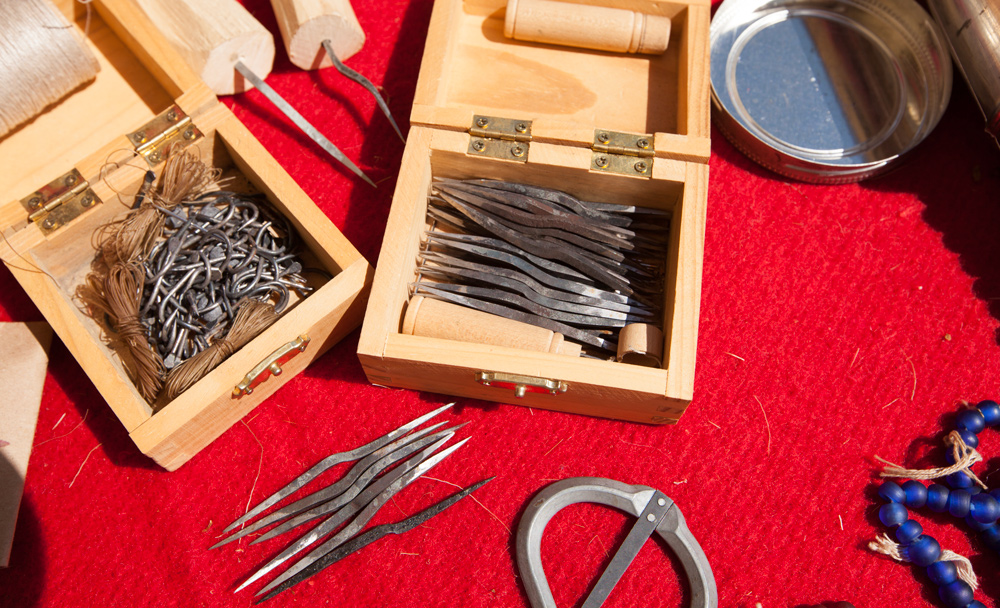At Long Camp, the captains divide the last of their trade merchandise so that the men can barter for food and favors at nearby Nez Perce villages. At one village, Sgt. John Ordway and Silas Goodrich observe Nez Perce women in mourning. A new shelter is built for the captains and their baggage, and five men start a new dugout canoe. Lewis discusses the fear of mistaking water hemlock for the edible roots collected by the locals.
Awls and Fishhooks
© 2013 by Kristopher K. Townsend. Permission to use granted under the Creative Commons Attribution-Share Alike 4.0 International license.
A New Canoe
we set five men at work to make a canoe for the purpose of fishing and passing the river. the Indians have already promised us a horse for this canoe when we have no longer any uce for her.
—Meriwether Lewis
A New Shelter
To day we made a small lodge of poles and covered it with grass, for Captain Lewis and Captain Clarke, as their tent is not sufficient to defend them from the rain.
—Patrick Gass
Last of the Merchandise
We devided our Store of merchindize amongst our party for the purpose of precureing Some roots &c. of the nativs to each mans part amounted to about an awl Knitting pin a little paint and Some thread & 2 Needles which is but a Scanty dependance for roots to take us over those Great Snowey Barriers (rocky mountains) which is and will be the Cause of our Detention in this neighbourhood probably untill the 10 or 1 of June. they are at this time Covered deep with Snow.
—William Clark
Mourning Women
I and one more [Silas Goodrich] of the party went up to a village about 5 miles on South Side on the Side of a hill & Spring run we purchased some white roots Shappalell &C. Some of the women in the village were crying aloud at different times in the course of the day. I Signed the reason of their lamenting & they gave me to understand that they had lost Some of their Sons in battle and that was the custom among them when their relation died they mourn and lement a long time after the aged women only make a loud noise.
—John Ordway
Avoiding Water Hemlock
we would make the men collect these roots themselves but there are several speceis of hemlock which are so much like the cows [cous] that it is difficult to discriminate them from the cows and we are affraid that they might poison themselves.
—Meriwether Lewis
Weather Diary
State of the Weather at rise
Wind at rise
State of the Weather at 4 P.M. Wind at 4 P.M. State of the Kooskooskee cloudy after rain S E fair after cloudy S E fallen 1 in. the air is remarkably dry and pure it has much the feeling and appearance of the air in the plains of the Missouri.
—Meriwether Lewis and William Clark[1]To assist the reader of this web page, the date column is not presented, the river columns have been merged, and some abbreviations have been spelled out.
Experience the Lewis and Clark Trail
The Lewis and Clark Trail Experience—our sister site at lewisandclark.travel—connects the world to people and places on the Lewis and Clark Trail.
Plan a trip related to May 21, 1806:

Notes
| ↑1 | To assist the reader of this web page, the date column is not presented, the river columns have been merged, and some abbreviations have been spelled out. |
|---|

